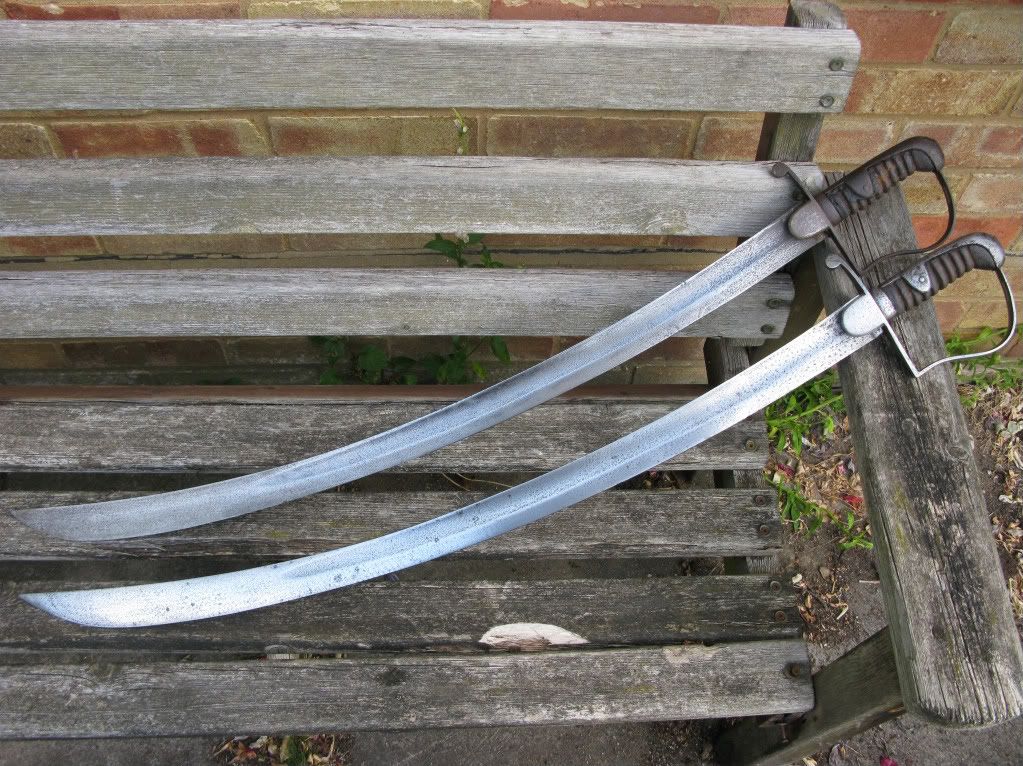|
|
Post by william m on Oct 13, 2012 12:34:03 GMT
Hi all, I will start this off with my antique sabres. I will add more photos of my other swords including nihonto to this thread.  OK so from top to bottom we have the following! Top three are French 1845 pat Infantry Officer Sabres. The bottom of the three would have been for an officer quite high up. The quality is much nicer and the sword is very light. In a fight however I would have chosen the more robust versions. French 1822 light cav sabre. This sword is really long and fairly light for the length. I wouldn't want to fence with it but must have given excellent reach upon a horse. British 1899 cavalry sabre. This is the short version and was not in service for long as there were complaints that the target would tend to lie flat on the floor to avoid sword blows. This sword was sent to the officer training corps in Cambridge. The sword is nice and sturdy but I would have prefered the 1796 swords in a fight. Two 1796 sabres. Really nice slashing swords. A little heavier than others I have handled at auctions. I suspect those I have found at auctions have been subject to harsh polishing techniques and have lost some mass. The tips look a bit more pointy than usual and I am wondering if they were involved in the battle of waterloo where troopers had the tips ground to be pointer. 1854 pat sword I think... This is a odd one as the sword is correctly made with an iron sleeve near the hilt but the blade is a non wilko and the hilt is pretty crude. I think this could have been made in India for an Officer who lost or broke his British made sword and needed a sword fast. 1822 pat sword. This light is really light and fast in the hand, however it would not be something I would stake my life on. I am surprised that it managed to stay in service for so long considering its fragility. 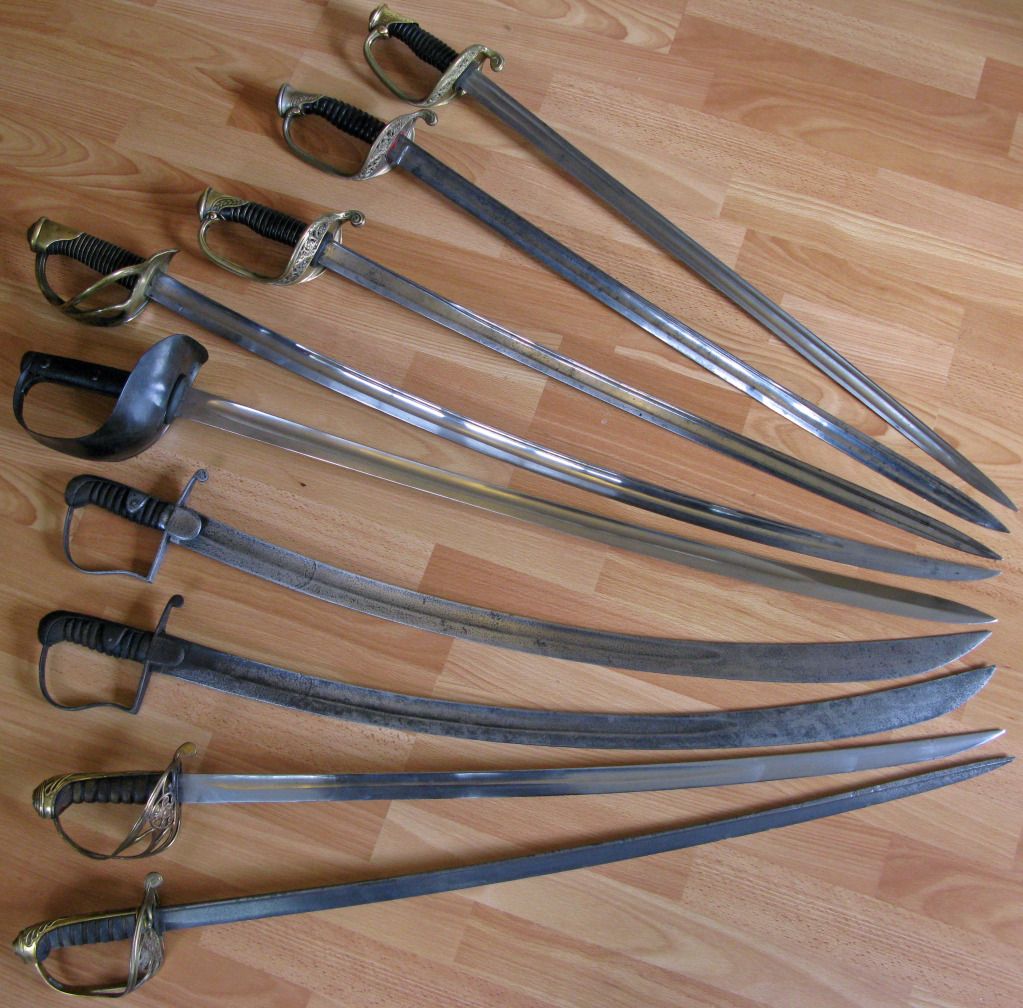 |
|
|
|
Post by William Swiger on Oct 13, 2012 16:37:15 GMT
Nice sabres William. :-)
|
|
Talon
Member
Senior Forumite
Posts: 2,554
|
Post by Talon on Oct 13, 2012 16:58:35 GMT
those two 1796's are really making me envious :mrgreen:
|
|
|
|
Post by william m on Oct 15, 2012 15:20:34 GMT
Now for something completely different. Talibons! These two are from the Viscian Islands in South East Asia. Great little choppers, these guys hold a special place in my heart due their quite unusual design and being able to hold them with two hands. This is due to the lower section being quite broad and blunt tho this varies from sword to sword. 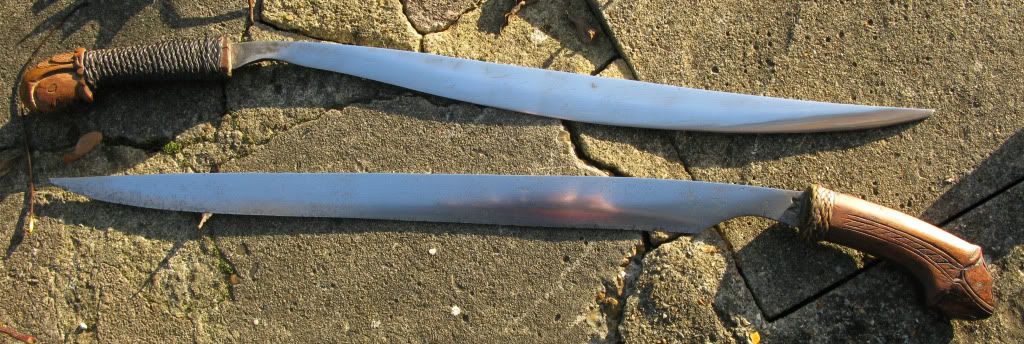  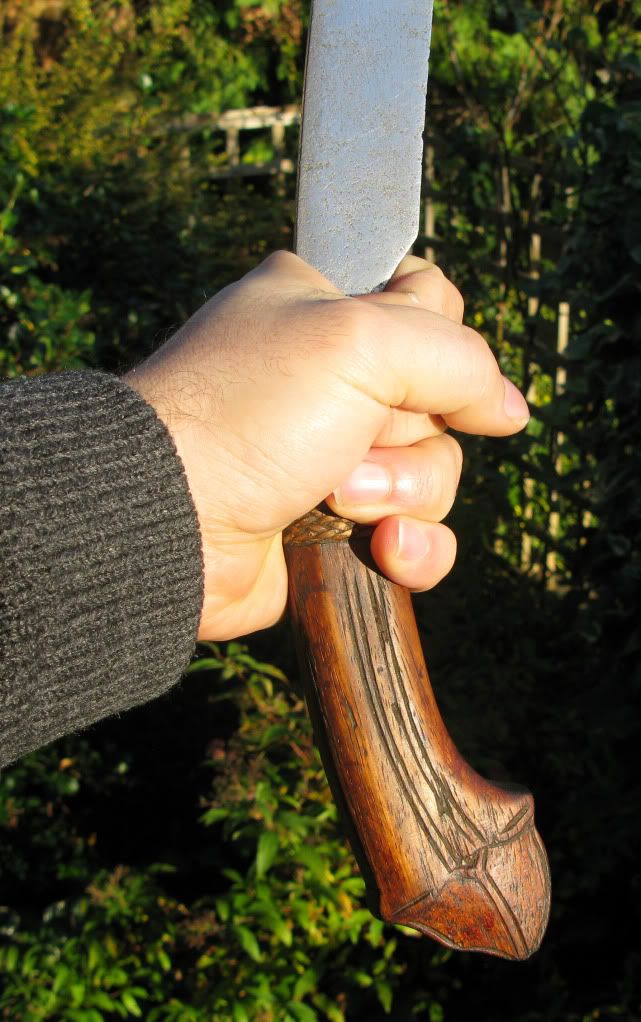 |
|
|
|
Post by Deepbluedave on Oct 16, 2012 6:58:39 GMT
William those sabres are great, really like the look of that 1845 infantry sword, just don't know much about antiques.
|
|
|
|
Post by Dave Kelly on Oct 16, 2012 21:39:26 GMT
Well you know I'm delighted  What are the backblade markings on the M1845 French Inf Offs? Chatelrault was the primary arsenal by 1832. Klingenthal still did custom work for officers. By 185? the hilt got a more streamlined look referred to as "gothic" in some texts. The M1822 Cavalerie-Legere Sabre: actually this WAS used in military duels of the period. There were lighter, faster sabers, but the 1822 is only 2.3 lbs, has 36 inch reach, excellent POB for point control. I'm a fan of that one. Most British Cav issued Napoleonic 96s were makers marked. Gill and Osborn being prime. According to Robson, issued 96s were actually 2.2 lbs, which is surprisingly robust. If your swords, like my own, are in North America and unmarked, they are probably Birmingham trade exports for the American militia. ( Great shape yours; mine are rougher.) Thanx for finally deciding to post  |
|
|
|
Post by william m on Oct 16, 2012 23:03:56 GMT
Only one of the 1845 swords has a what you would think of as traditional backblade markings. The sword with the straight blade is pretty unusual and has a stamp on the spine of MP. I thought that perhaps this meant "municipal paris" as in the police force. Three hilts 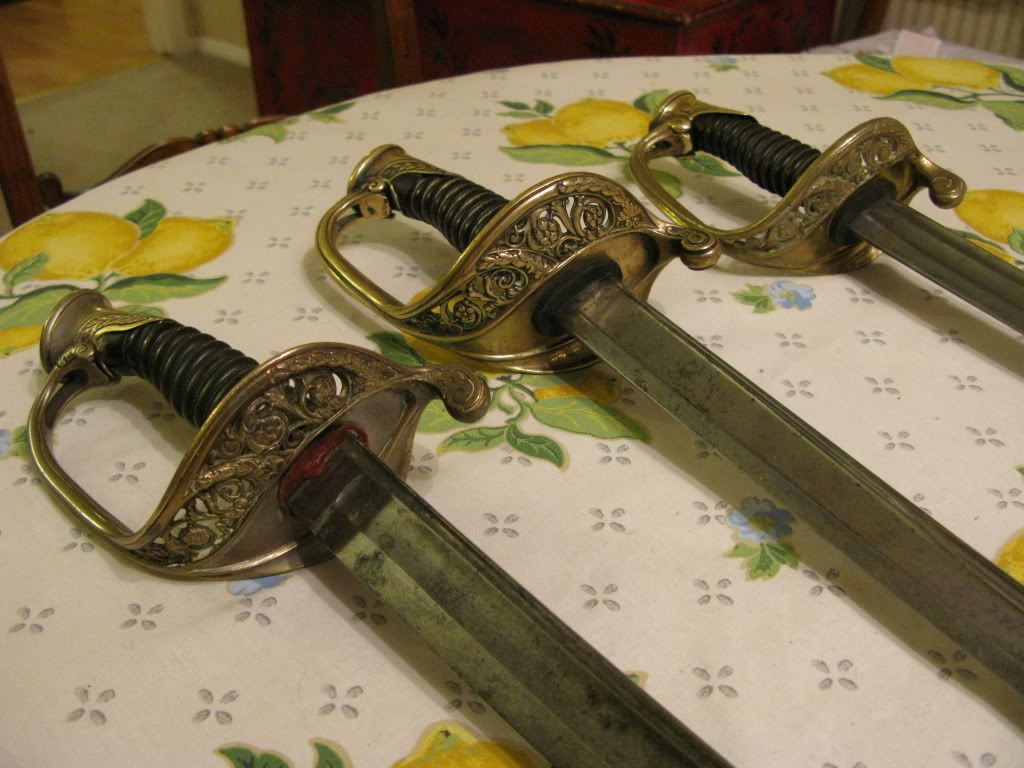 Three tips  As a special treat for you dave I have the following photos. For the superior inf 1845, I took the sword apart to re-peen it and found some interesting stamps on the tang. 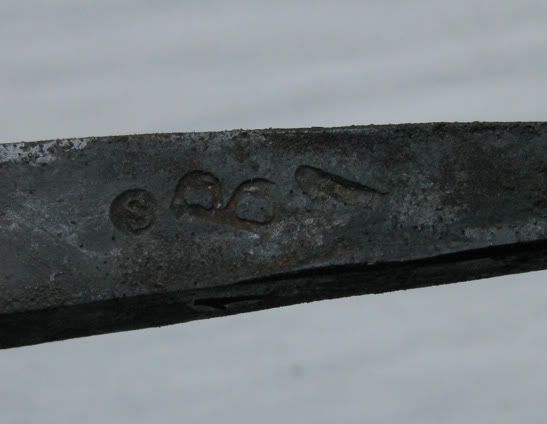 As per request, here is the spine of the superior 1845. Glen.C on SFI very kindly informed me that the blade was of Chatellerault manufacture.  I don't think I would personally choose my M1822 for a duel. Sure it is long enough but I find the high amount of curve combined with long length quite difficult to use when performing a few moves. 1845 swords are much more fencible, though are quite a bit shorter. With regards to the 1796's I bought them as a pair from ebay years back. They are both pretty much the same sword, apart from I cleaned one with de-corroder and brass wire and left the other more as it was apart from deactivating the rust. My two 1796's were bought in the UK, which is where I live so I am not too sure about them being made from the American market. But then again Birmingham is not too far away from where I am, so it is certainly a possibility that they were intended for the US but never made it there. |
|
|
|
Post by william m on Oct 16, 2012 23:09:24 GMT
|
|
|
|
Post by william m on Nov 16, 2012 10:55:36 GMT
Here is my antique cane sword. I picked this up at an Arms fair. I have always wanted a decent sword cane and being in the UK, law dictates that I must have an antique as modern examples are illegal. This is fine for me as I mostly collect antique arms anyways. The cane has been well used by evidence of the worn silver band and sheep horn grip. I can tell that the owner was right handed due to the slight bend in the shaft due to leaning on the right. The blade is unsigned and is triangular for the first 3/4 then quickly transitions into a square blade. I would had thought that a fully triangular hollow-ground blade would have given superior stiffness. The sword handles wonderfully as with the horn handle acting similarly to a piston grip that you find on modern fencing swords. The silver band is engraved but has been worn down. It has a 4 proofing marks, which I have not yet identified. As far as I can tell the inscription is as follows. "PRESENTED TO WILLIAM MSSOH BY THE MEMBERS OF THE **LSILL POLICE FIRE BRIGADE ON THE RETIREMENT 1897" It is really difficult to read some of the words due to ware, so I probably have William's surname wrong. 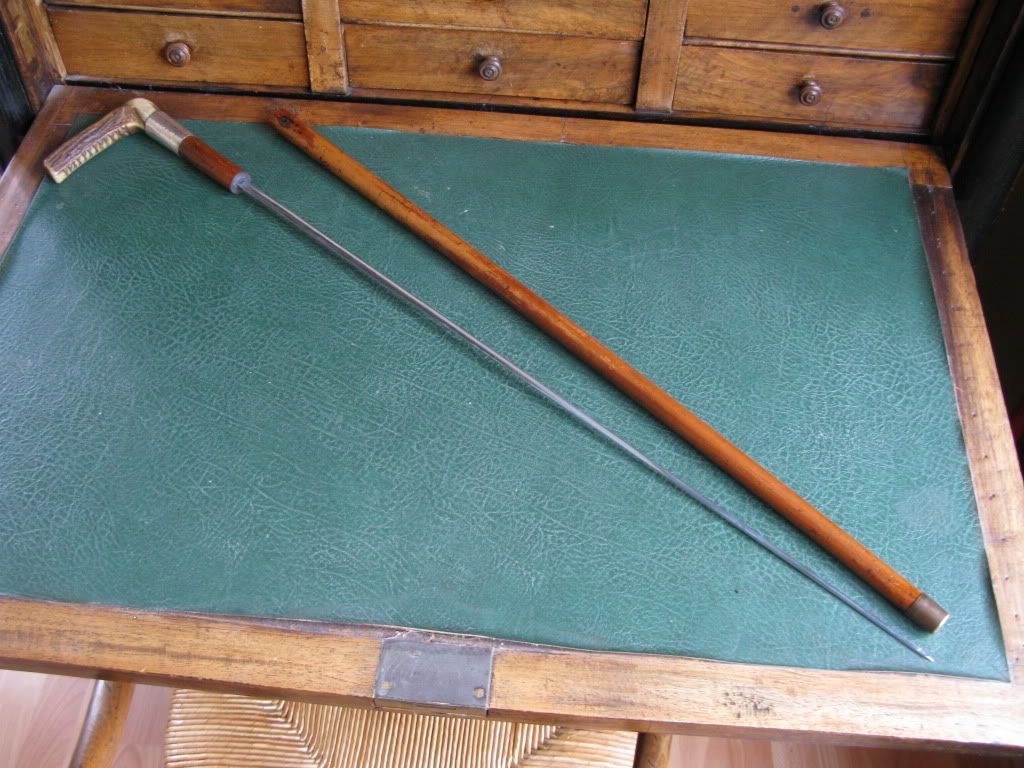   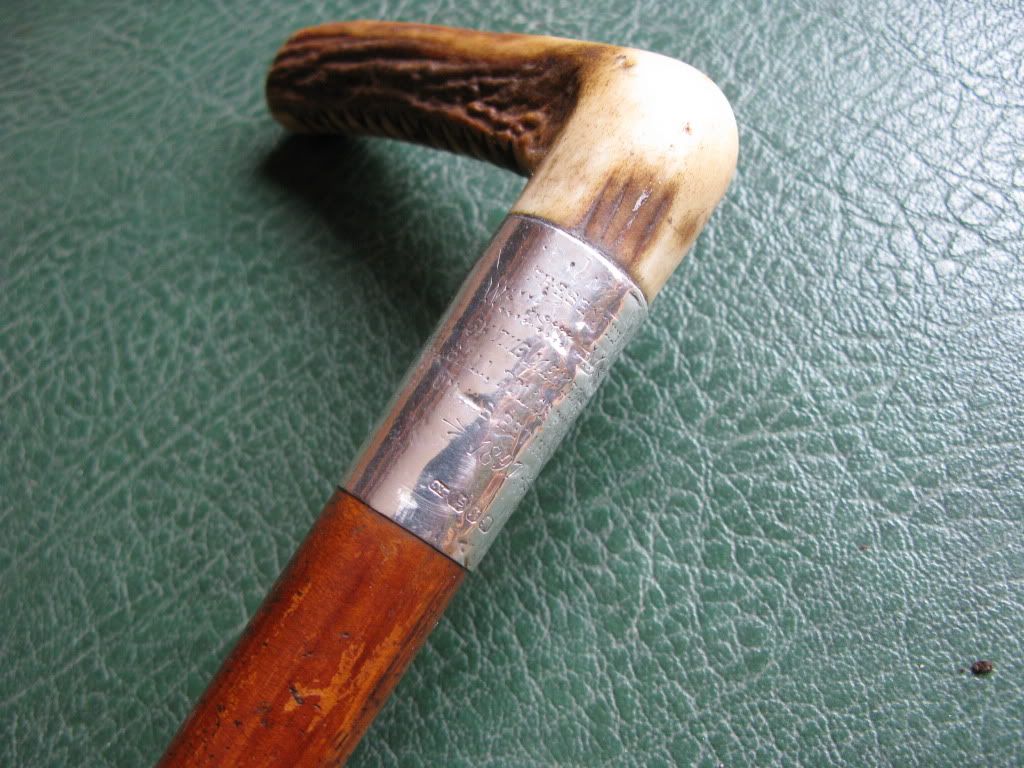 From "Robert Wilkinson-Latham" on swordforum who very kindly supplied me with the below information and image. Below is a shot of the Wilkinson Catalogue from 1912-13 showing a selection of these " The type pf 'grip'/handle was described as "White Buckhorn Hook" Price in those days was 45/- (£2-5-0) In the earlier 1906 Catalogue with silver band, the "Hook" sword canes were priced at 50/ (£2-10-0)- and 60/-(£3-0-0) 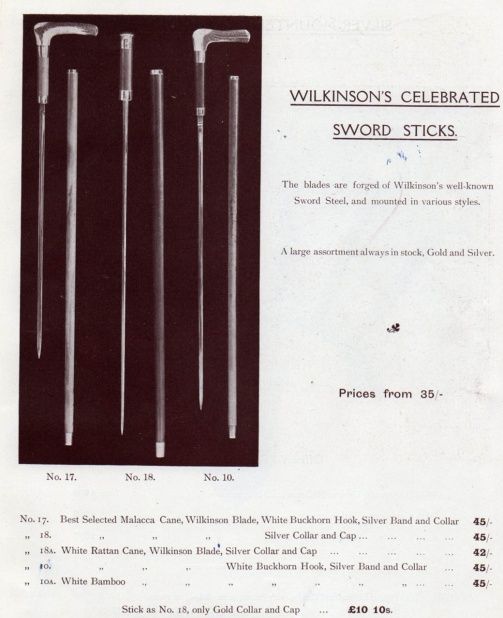 |
|
|
|
Post by Jussi Ekholm on Nov 16, 2012 14:50:41 GMT
Really nice stuff you got Will, can't wait to see more pictures. Those talibons are neat, haven't seen those before. I think I might remember few items you had some years ago, and will be nice to see if you still have them.  |
|
|
|
Post by Lonely Wolf Forge on Nov 16, 2012 18:02:07 GMT
drooling over those 1796 sabers...
|
|
|
|
Post by william m on Jan 25, 2013 12:13:48 GMT
Had this a while ago, an Albion Squire line Vinland viking sword. Beautiful sword but too heavy for me. Made a nice new wrap for it, which I am pretty pleased about. As the swords are made blunt as standard, they have a noticeable secondary bevel if you have the sharp option. This needs quite a bit of work to blend in as its not perfectly clean near the hilt. 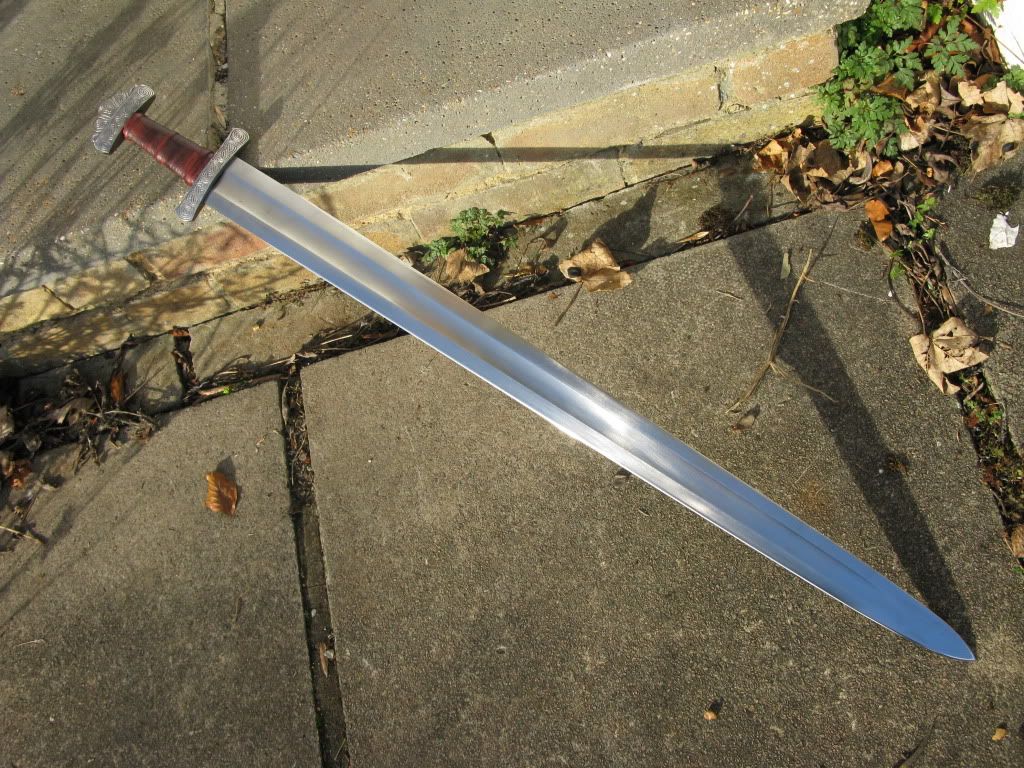 |
|
|
|
Post by william m on Jan 25, 2013 12:15:35 GMT
A Nihonto tanto. Quite nice and complete piece, was most likely made for export in the 1800's. The blade has a lot of niku. The fittings are really the nicest part of the tanto with the kokatana blade having been signed. The tsukamaki is leather and I really like just how tiny the tsuka is, not something you see with modern tantos.  |
|
|
|
Post by william m on Jan 25, 2013 12:22:40 GMT
A nice court sword. Sold this a while ago so can't remember exactly what country but I think most likely it was Prussian.  |
|
|
|
Post by william m on Jan 27, 2013 10:58:13 GMT
One English smallsword and an English court sword. The smallsword is mounted with an old family blade. I suspect the sword was owned by somebody in the military as the hilt is covered with heads and cannons! The English court sword I don't think was ever issued as the section on the etched blade that is left blank for the name of the owner is still blank. 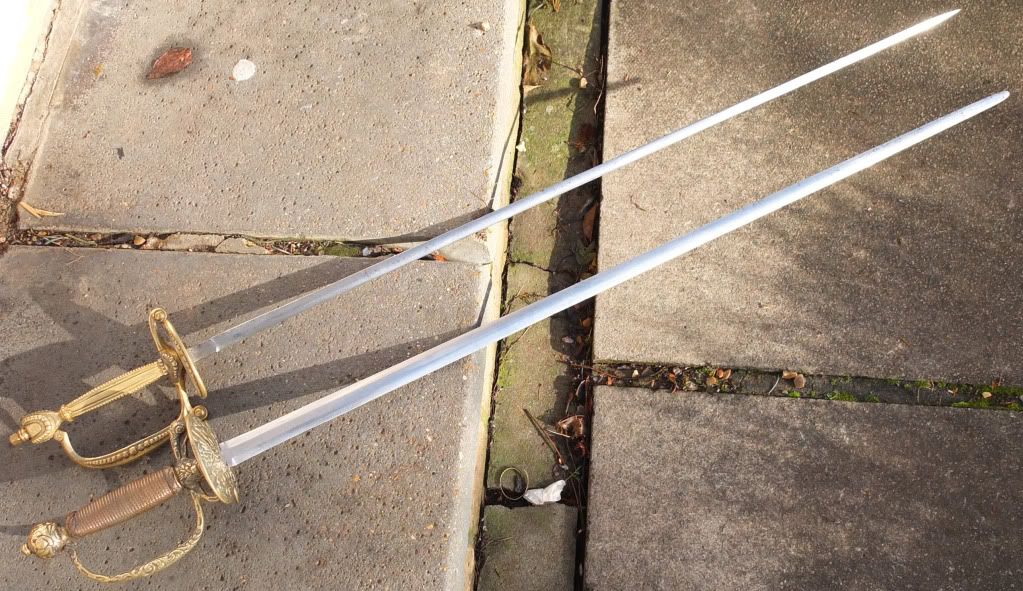  |
|
|
|
Post by william m on Sept 2, 2013 9:01:16 GMT
My Yataghan,  |
|
|
|
Post by Jussi Ekholm on Sept 2, 2013 18:11:02 GMT
That yataghan looks lovely, very nice that you have scabbard for it too.
|
|
|
|
Post by william m on Sept 3, 2013 12:42:14 GMT
The yataghan is quite a light weapon with a forward point of balance. Although the sword is easily maneuverable I would class it as a weapon for the chop! The pommel is designed to keep the weapon edge aligned and the grip in your hand throughout a wild series of swings. Certainly not one for fencing.
The scabbard is made of metal and wood and for me is unusual in that it has nothing for a strap but I understand that most yataghan scabbards also did not have this as a feature.
|
|
|
|
Post by william m on Sept 24, 2013 14:51:40 GMT
My only modern katana, a oni forge ukigumo limited edition sword with plated silver tsuba and f/k. The steel is folded, which is nice though its nothing at all like the hada on real nihonto. I gave the sword a re-wrap in blue silk as I hate cotton ito and I also replaced the menuki to a nice Japanese alloy set. Lastly I wrapped the top half in rattan rings just because I quite like that look. Next up is to replace the sageo with perhaps a blue and white patterned one in silk.  |
|
|
|
Post by william m on Sept 24, 2013 15:12:50 GMT
Two British Spadroons with Ivory grips and broken guards. Both have since been moved on but the earlier ball hilt was an excellent sword, one that I have not since found a replacement for.   |
|
















